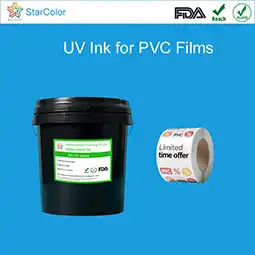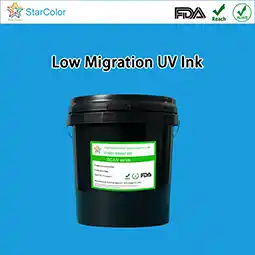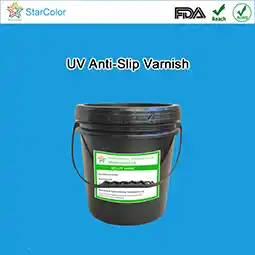Solution for gravure printing on paper
Date: Sep 29 2024 From: Star Color Views:
Gravure printing is widely used in packaging cartons, book covers, and gift wrapping. However, challenges remain, such as uneven ink absorption, registration deviations, and incomplete drying. With stricter environmental regulations limiting VOC emissions, traditional printing solutions can no longer fully meet the dual requirements of high quality and eco-friendliness.
This article presents a comprehensive gravure printing solution for paper substrates, covering the entire process from pre-treatment – printing – post-treatment, across four dimensions: paper adaptability, equipment optimization, process control, and environmental upgrades. Backed by real-world data and case studies, it provides guidance for manufacturers to resolve key pain points and improve production efficiency.
1. Core Pain Points of Paper Gravure Printing
Paper is porous and moisture-sensitive, fundamentally different from non-absorbent film substrates. The main pain points lie in substrate adaptability and process coordination, directly affecting printing quality and efficiency.
1.1 Printing defects caused by paper properties
-
Uneven absorption & strike-through: Paper density and porosity vary significantly. Low-density paper tends to over-absorb ink, leading to thin layers and light colors. High-density paper may absorb insufficient ink, causing surface “floating ink” or strike-through.
-
Moisture sensitivity & deformation: Paper moisture content fluctuates with the environment. High humidity causes edge curling, with registration deviations exceeding 0.15 mm. Low humidity makes paper brittle and prone to breakage during rewinding.
-
Surface roughness affecting precision: Coarse paper surfaces cause dot loss, with 50% dot reproduction only 70–80%, limiting fine graphic printing.
1.2 Bottlenecks of traditional processes
-
Low drying efficiency, high energy use: Traditional gravure drying relies on hot air. For thick ink layers (3–5 μm), drying tunnels must be 3–5 m long, taking >5 seconds, with energy consumption 40% higher than film gravure. Uneven drying can also cause ink blocking.
-
Poor registration accuracy, high waste: Paper stretches under tension and temperature fluctuations. Mechanical registration cannot compensate in real time, leading to >0.1 mm deviations and 8–12% waste rates.
-
VOC emissions above limits: Solvent-based gravure inks contain 300–500 g/L VOCs. Even with recovery systems, the efficiency is only 70–80%, often exceeding China’s GB 38507-2020 limit of ≤100 mg/m³ VOC emissions in packaging printing.

2. Paper Pre-Treatment Solutions: Stabilizing the Substrate
Paper properties determine printing quality. Proper paper selection and pre-treatment minimize substrate variability.
2.1 Paper selection standards
| Printing Need | Paper Type | Density (g/cm³) | Roughness Ra (μm) | Moisture (%) | Tensile Strength (kN/m) |
|---|---|---|---|---|---|
| High-resolution graphics (≤100 LPI) | Coated, Matte | 0.8–1.0 | ≤0.5 | 6–7 | ≥2.5 |
| Large solid areas (cartons) | Kraft, Whiteboard | 0.6–0.8 | 1.0–1.5 | 7–8 | ≥3.0 |
| Thin gift wrap paper | Lightweight, Specialty | 0.5–0.7 | 0.8–1.2 | 6–7 | ≥1.8 |
2.2 Moisture conditioning and stabilization
-
Equilibrium conditioning: Store paper for 24–48 hrs in controlled rooms (23±2°C, 50±5% RH). Stretch variation drops from ±0.3% to ±0.1%, cutting registration deviation by 50%.
-
Pre-stretching: Apply 0.5–1.0 kN/m tension before printing (esp. kraft paper) to reduce in-process variation to ±0.05%.
-
Surface coating: Apply 0.5–1 μm water-based primer to rough paper, reducing roughness (Ra from 1.5 μm → 0.8 μm) and preventing strike-through.
3. Equipment Optimization: Adapting to Paper Properties
3.1 Cylinder & ink transfer modifications
-
High-absorbency paper (kraft): Deep cells (35–40 μm, opening 60–70 μm), ink transfer 15–20 g/m².
-
Low-absorbency paper (coated): Shallow cells (20–25 μm, opening 40–50 μm), transfer 8–12 g/m².
-
High-resolution graphics (150 LPI): Laser-engraved cylinders with ≤3% cell deviation, dot reproduction ≥90%.
3.2 Registration system upgrades
-
Closed-loop vision system: Industrial cameras detect marks per color unit. AI algorithms auto-correct deviations (±0.01 mm). Waste reduced 60%.
-
Segmented tension control: Unwinding 0.8–1.2 kN/m, printing 1.0–1.5 kN/m, rewinding 1.2–1.8 kN/m.
-
Temperature compensation: Sensors adjust drying temperature when fluctuation >2°C.
3.3 Drying system upgrades
-
Three-stage drying:
-
40–50°C low-temp hot air – surface evaporation.
-
60–70°C mid-temp + IR (2–5 μm) – internal solvent removal.
-
50–60°C cooling stage – stabilizes paper.
→ Drying time cut from 5s to 2.5s, tunnel length reduced from 5 m to 3 m, energy use down 30%.
-
-
Solvent recovery: Activated carbon + condensation recovery, efficiency 95%. Recovered solvent (≥99% purity) reused, cutting annual ink-solvent cost by 40–50%.
-
Humidity control: Maintain <30% RH in hot air. Each 10% reduction increases drying speed ~15%.
4. Process Control: Standardizing Ink & Printing Parameters
4.1 Ink formulation
-
Kraft (high absorbency): High-solids (50–60%), fast-drying inks.
-
Coated paper (low absorbency): Low-viscosity, slow-drying inks.
-
Eco-demand applications: Water-based gravure inks (≤50 g/L VOC) or ethanol-based inks (≥80% ethanol).
Standardized mixing: viscosity adjusted hourly, pigment dispersion ≤5 μm, ΔE ≤0.8 for batch consistency.
4.2 Printing parameters
-
Impression pressure: 0.3–0.4 bar (coated), 0.4–0.5 bar (kraft).
-
Speed: 150–200 m/min (kraft), 200–250 m/min (coated).
-
Inter-unit spacing adjusted per drying rate.
4.3 Quality inspection
-
Online vision detection: Registration (±0.02 mm), dot gain (±2%).
-
Offline sampling (per 1000 m): Adhesion ≥4B, rub resistance 50 cycles (500 g load), ΔE ≤1.0, solvent residue ≤5 mg/m².
-
Data traceability: Full production records ensure quality consistency.
5. Environmental Upgrades: Dual Approach
5.1 Source reduction
-
Water-based inks: For food/children’s packaging, solvent residue ≤3 mg/m².
-
Ethanol-based inks: VOC ≤100 g/L, safer than conventional solvents.
5.2 End-of-pipe treatment
-
Closed ink system: Cuts fugitive VOC emissions by 60%.
-
RTO (Regenerative Thermal Oxidizer): VOC destruction ≥99%, heat recovery ≥95%, outlet VOC ≤30 mg/m³.
-
Odor removal: Activated carbon towers eliminate residual odors (≤200 odor units).
6. Case Study
Background:
A packaging firm in Zhejiang, China, printing cartons with solvent-based gravure. Issues: registration deviation 0.15 mm, drying time 5s, VOC emissions 150 mg/m³, waste rate 10%. Frequent environmental complaints.
Upgrades:
-
Paper pre-treatment: equilibrium conditioning (23°C/50% RH, 48 hrs), pre-stretching kraft to ±0.05%.
-
Equipment: closed-loop vision registration, segmented drying (IR + hot air), RTO installation.
-
Process: high-solids ethanol-based ink (VOC ≤100 g/L). Speed raised from 150 → 200 m/min, drying time 3s.
-
Quality: online inspection system added.
Results:
-
Quality: Registration deviation ±0.05 mm, waste down to 2.5%. Adhesion 5B, ≥500 rubs.
-
Efficiency: Daily output rose from 50,000 m² → 80,000 m², energy use -35%.
-
Environmental: VOC emissions cut to 25 mg/m³, 95% solvent recovery, annual savings ≈ $27,000, zero complaints.
7. Conclusion: Future Directions
The key to paper gravure printing lies in substrate adaptation, coordinated process optimization, balancing quality and environmental compliance. Through pre-treatment, equipment upgrades, standardized process control, and green technologies, manufacturers can overcome traditional bottlenecks and achieve efficient, high-quality, and sustainable production.
In the future, with the advancement of AI-based vision systems and solvent-free inks, paper gravure printing will continue evolving toward intelligent and green manufacturing.
 RU
RU EN
EN CN
CN















